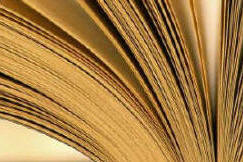PowerPoint and Automaticity
By Terence Cavanaugh Ph.D.
|

|
Terence Cavanaugh is a visiting professor at the University of North Florida where he teaches educational technology. Terry has taught
educational technology to teachers in the United States, the Caribbean,
Europe, and even Kuwait. His current book on electronic books in education is
being published this summer by ISTE. Visit his website at http://www.drscavanaugh.org
|
It is important for us as teachers to be aware of options
that we have concerning how we can use, adapt, or make accommodations with the
tools that we have available in the classroom. In this article I’ll describe a
strategy for using PowerPoint or other presentation software to be used as an
automaticity measuring tool or practice tool with students.
Research on children has long demonstrated importance of
automaticity in young developing readers. The reading process involves two
separate but highly interrelated areas - word identification and comprehension.
Research has shown that difficulties in automatic word recognition,
automaticity have a significant affect on a reader's comprehension (Torgesen,
Rashotte, and Alexander 2001). Even mild difficulties in word identification
can cause distractions during reading, causing problems with meaning, reduce
the reading speed, and may cause the student to have to reread selections for
meaning. If a student does not have the ability recognize words with
automaticity, they must spend additional time on decoding rather than meaning
(FOR-PD 2005).
Automaticity is defined as fast, accurate and effortless
word identification at the single word level (Hook and Jones 2002). Skilled
readers on average will display very predictable and consistent responses. They
should be able to recognize and process simple or common words in approximately
275 milliseconds, a bit more than a quarter of a second (Barber 2002). The
speed and accuracy at which single words are identified is the best predictor
of comprehension. While generally not available for conscious inspection,
automaticity word and term recognition operations on a perceptual stimulus,
which is fast, rapid and fluent. Skilled word recognizers have developed
internal cognitive structures that are different from decoding skills. Students
with poor reading fluency or lacking in automaticity are limited because they
read less during an amount of time, which can end up reducing the amount of
material read, which in turn have an impact on learning vocabulary and content.
The goal of fluency instruction for students is to help them become more fluent
readers so that more emphasis can be placed on comprehending content.
One example area where students need automaticity in reading
is with the Dolch word list. The Dolch word list is a set of high frequency
words that were first published by Edward William Dolch, in his 1948 book,
Problems in Reading, The Garrard Press, 1948. The Dolch list of high frequency
words comprises the 220 words, excluding nouns, that are considered to be
common words These 220 words actually make up about 50 to 75% of all the words
used in school and library books, newspapers, and magazines (Kidzone n.d.). The
words are often known as “sight words” because they usually can’t be
illustrated with simple pictures our sounded out, instead they must be learned
and recognized “on sight.” The importance of learning the Dolch words is also
very important for the beginner ESOL/EFL/ESL student. While most native
speakers have been learning written forms of words that make up a large part of
their oral/aural vocabulary, this is often not true for students with English
as their second language.
The Automaticity PowerPoint
The Automaticity PowerPoint is set with for twenty words or
phrases, which can be changed. The current words in the Automaticity PowerPoint
come from twenty words from the third grade Dolch list. The design of the
presentation is set to that when the presentation is started and the user
presses the click to start button, a blank screen will display automatically
for half a second, then automatically advance to the word screen, displaying it
for a third of a second, then automatically advance to display a blank screen
again for half a second, and after that pausing on a holding screen and waiting
for input to advance to the next word or phrase. A student would watch the
presentation on a screen, click the advance button, and then read the word as
it flashes on the screen and then say the word aloud during the holding screen.
With this design it takes 81 slides to make up the twenty word/phrase automaticity
practice/assessment. You can download the Automaticity PowerPoint from the online
version of this edition of the Florida Reading Quarterly section at the Florida
Reads web site at http://www.flreads.org
.

Figure 1. Timing within the presentation from the slide sorter view.
Using the Automaticity PowerPoint
Write out a list of the terms which are in the presentation to
use to check the student. Start the Automaticity PowerPoint and then view the
show. A teacher, aide, or other assistant can listen as the student reads the
displayed words, checking for what the student can read with automaticity.
How to change the words
You are not limited to the one set of words that are on the PowerPoint
for you to download, you can edit those words and change them to any words or
phrases that you wish.
- With PowerPoint on and the file open so that you can edit
it..
- In the normal view go to the slide that has an automaticity
word or phrase on it.
- Double click on the word.
- Type in your new word or phrase.
- Advance to the next slide with a word or phrase and change
it, repeat this process for the rest of the words or phrases that you wish
to change.
- You might want to save each set as a separate
PowerPoint so you can have word list options without having to go and
rewrite the words.
Another option that a teacher could implement would
be to change the words to images for a different kind of recognition exercise.

Figure 2 Normal view for editing a slide containing a word or phrase to be
changed.
How to change the time
You may have students who cannot read with automaticity at
the third of a second level. You can change the amount of time that the words
are displayed on the screen, either increasing or decreasing the time the word
or phrase is shown.
- With PowerPoint on and the file open so that you can edit
it.
- In the normal view go to the slide that has an
automaticity word or phrase on it
- Select Slide Show from the menus, and then
select Slide Transition.
- A window or side bar should appear with the slide transition
information. Here I am using PowerPoint 2003 and the transition
information is displayed as a side bar.
- In the Advance time area the timing should be set to
advance Automatically after 00:00.3, which means 1/3 of a second. Change
the .3 to some other number to achieve a different tenth of a second, for
example 00:00.5 for half a second. PowerPoint will not go to the hundredth
of a second so don’t bother with numbers like 00:00.25.
- You will need to go to each slide that has an automaticity
term and change the timing for that slide. Warning - do not
select the Apply to All Slides button, as this will cause the PowerPoint
presentation when being shown to never pause until it gets to the end of
the slides.

Figure 3. Adjusting the slide transition timing.
Teachers can also make other changes, such as the font
structure, size and/or color. For example a teacher may wish to change the
slide backgrounds to a light yellow. A light yellow or blue background has been
found to be helpful to many readers (Stein 2003), including students with
reading disabilities such as dyslexia.
Because the reading demands on our students are high,
students with poor reading fluency can fall behind, and it is important to
provide and use tools, including technology, that can assist students in
reading practice. Teachers can also use these tools in student assessment. PowerPoint
is a common program found in most schools today, and while it is most often
used as a presentation tool, it can also be used in other situations. Feel free
to play with the Automaticity PowerPoint, adjust and experiment with it and
your students.
Download the Automaticity PowerPoint from:
http://www.flreads.org/Publications/quarterly/samples/automaticity.ppt
References
Barber, C.
(2002). WISER Parent Reading for Success. WashingtonParent.com. Retrieved April
2005 from http://www.washingtonparent.com/articles/0207/reading.html
Dolch, E.W. 1948. Problems in reading. Champaign IL: Garrard Press.
FOR-PD (Florida Online Reading Professional Development). (2005). Developing and Assessing
Fluency March 2005. Retrieved April 2004 from http://www.itrc.ucf.edu/forpd/strategies/
.
Hook, P. E. and
Jones, S. D. (2002). The Importance of Automaticity and Fluency for Efficient Reading Comprehension. International Dyslexia Association quarterly newsletter,
Perspectives, Winter, 2002, vol. 28, no. 1, pages 9-14.
Kidzone. (n.d.). Dolch Words. Retreived April 2005 from http://www.kidzone.ws/dolch/
Stein, J. (2003).
Visual Motion Sensitivity and Reading. Neurospychologia V
41(2003) p. 1785-1793. Retrieved April 2005 from http://www.physiol.ox.ac.uk/~jfs/pdf/jfsnpsychologiamotion.pdf
Torgesen,
J.K., Rashotte, C.A., and Alexander, A.W. (2001). Principles of fluency
instruction in reading: Relationships with established empirical outcomes. In
M. Wolf (Ed.), Dyslexia, fluency, and the brain. Pages 333-335. Timonium, MD: York Press.
DOLCH word
lists
http://gemini.es.brevard.k12.fl.us/sheppard/reading/dolch.html
PreK-3
http://www.createdbyteachers.com/sightfreemain.html
Teacher-2-Teacher Sight Words -- This section will have various free materials
for Dolch sight words.
http://www.english-zone.com/reading/dolch.html
From English-zone.com the 220 Dolch Basic Sight Words
http://www.janbrett.com/games/jan_brett_dolch_word_list_main.htm
Dolch Word Lists with art work. Click on a picture to
download the full page artwork (PDF or HTML).
http://www.kidzone.ws/dolch/preschool.htm
The Kidzone Dolch Word List - Preschool and Ideas for using Dolch words with flashcards:
Cite as: Cavanaugh, T. (2005) PowerPoint and Automaticity.
Florida Reading Quarterly Volume 41, No.
4, Summer 2005.
Pages 30-33. Available online at
http://www.flreads.org/Publications/quarterly/samples/PowerPoint_and_Automaticity.htm


